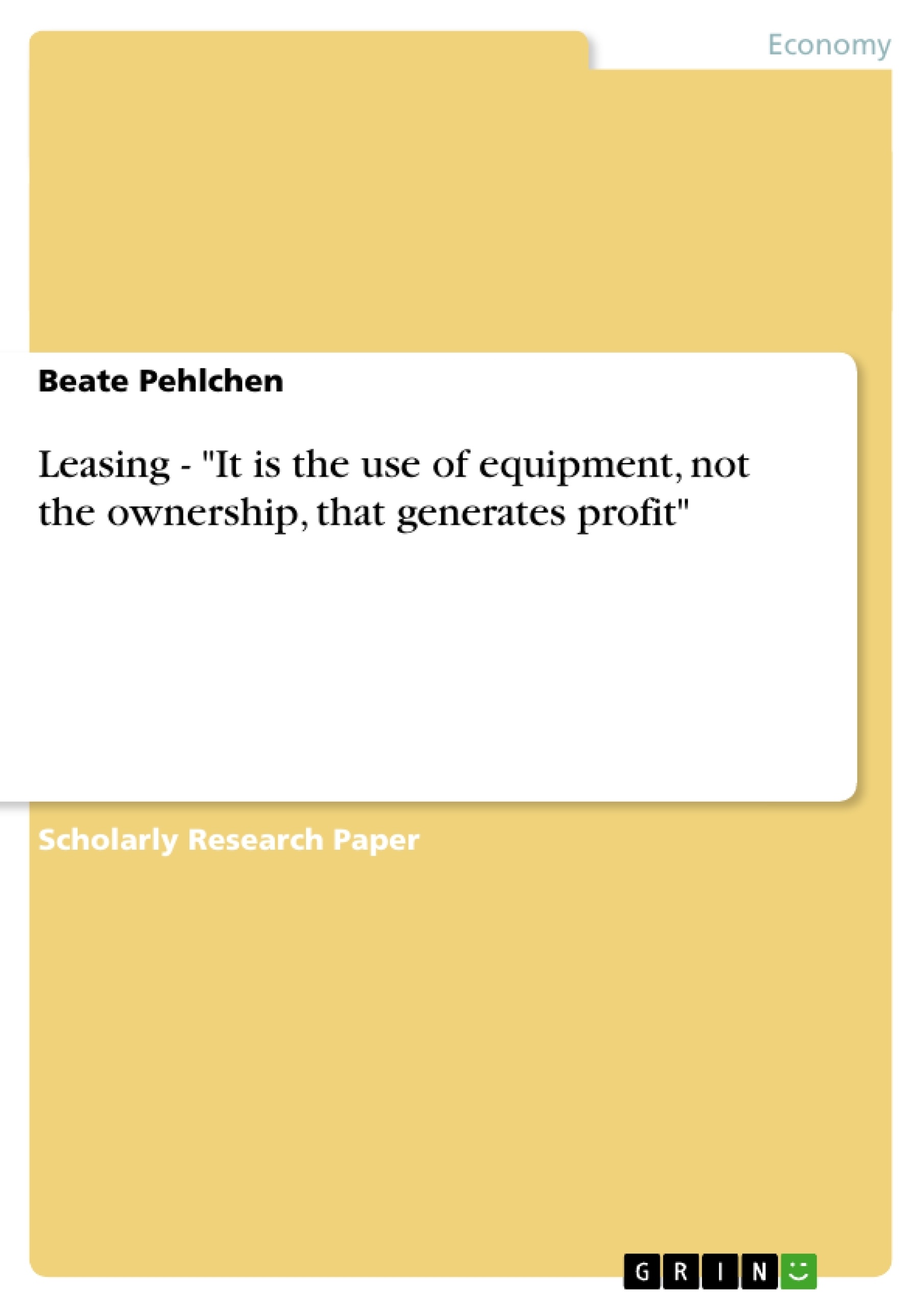“To lease or not to lease – a financing decision”
Companies and experts in special literature often discuss the question whether it is cheaper for a company to buy certain goods on credit or with its own capital. When buying a certain good we moreover have to differentiate between goods that are purchased on lease or bought on credit. This paper does not deal with the fundamental question whether to buy on credit or to lease as it has been proved the advantages and risks of leasing.
The question now is why do companies nevertheless discuss about buying or leasing? Why do companies decide on leasing a wide range of goods from typewriters to cars, trucks and even complete industrial plants? About 11 % of all goods are leased in Germany at the moment. 53 % of which are leasing transactions involve cars. First of all there are considerable differences with regard to the drawing up of a balance sheet. Goods that are bought have to be capitalized with their initial costs while goods that are leased do not have to be shown in the balance sheet of the leaseholder.
Companies do follow completely different strategies regarding this subject. HENKEL (chemical industry) and RTL (broadcasting company) on the one hand have leased all of their cars explaining that this is the cheapest alternative for them. Bayer and 3M Deutschland on the other hand use the same explanation but they buy their cars. Car policies are even different between various subsidiaries of one company.
Inhaltsverzeichnis (Table of Contents)
- Introduction
- History
- Forms of the leasing
- Operate - Leasing
- Finance - Leasing
- Difference between Operate - Leasing and Finance - Leasing
- Why Leasing ?
- The Advantages of Leasing
- Leasing in the compares with Loan and Cash
- Disadvantages
- In the tourism industry
- Summary
- Index
Zielsetzung und Themenschwerpunkte (Objectives and Key Themes)
This paper explores the reasons why companies choose to lease goods instead of purchasing them outright. It examines the historical development of leasing, its various forms, and the advantages and disadvantages of this financing option. The paper also delves into the implications of leasing within the tourism industry.
- Historical development of leasing
- Different forms of leasing
- Advantages and disadvantages of leasing
- Leasing in the tourism industry
- The impact of leasing on company balance sheets
Zusammenfassung der Kapitel (Chapter Summaries)
- Introduction: This chapter introduces the concept of leasing as a financing option and highlights the ongoing debate within companies regarding buying versus leasing. It emphasizes the proven advantages and risks of leasing, leading to the question of why companies continue to consider both options.
- History: This chapter traces the evolution of leasing, starting from its ancient roots in the concept of using goods without owning them. It highlights key milestones, including the emergence of leasing companies and the rapid growth of the leasing industry in the latter half of the 20th century.
- Forms of the leasing: This chapter explores different types of leasing arrangements, specifically focusing on "Operate - Leasing" and "Finance - Leasing." It also examines the key differences between these two approaches to leasing.
Schlüsselwörter (Keywords)
This paper focuses on the financial concept of leasing, its history, different forms, advantages, and disadvantages. It also explores the application of leasing within the tourism industry. Key terms include: leasing, financing, operating lease, financial lease, balance sheet, tourism industry.
- Arbeit zitieren
- Beate Pehlchen (Autor:in), 2003, Leasing - "It is the use of equipment, not the ownership, that generates profit", München, GRIN Verlag, https://www.grin.com/document/18119



